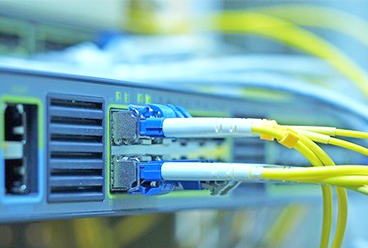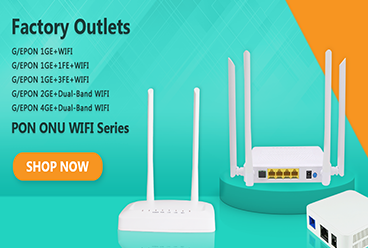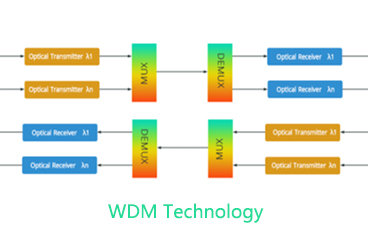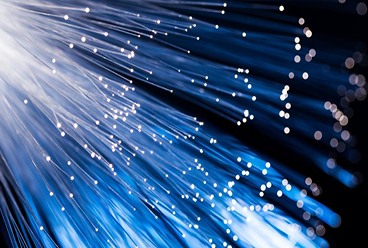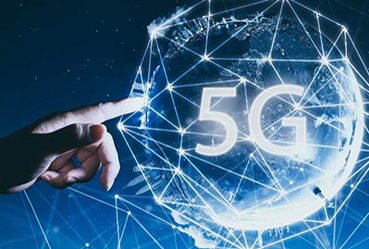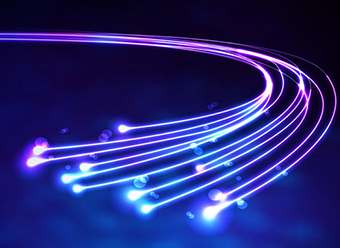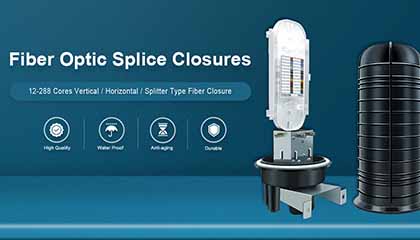With the continuous expansion of data center scale and the rapid growth of network bandwidth demand, 400G and 800G Fiber optic Transceivers have become key devices for ultra-high-speed data transmission. This article will introduce the technical characteristics, common types and main application scenarios of 400G and 800G Fiber optic Transceivers.
400G Fiber optic Transceivers
400G Fiber optic Transceivers are the mainstream products of current data center high-speed networks. They support a data transmission rate of 400Gbps and meet the requirements of high density, high bandwidth and low power consumption.
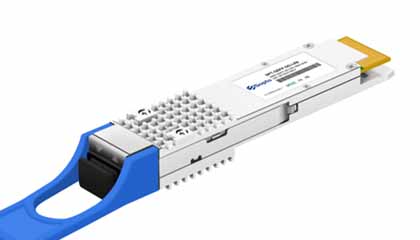
Common types and packaging
QSFP-DD (Quad Small Form-Factor Pluggable Double Density): The most common 400G Fiber optic Transceivers packaging, backward compatible with QSFP28, can be used for high-density switch and server interconnection.
OSFP (Octal Small Form-factor Pluggable): Slightly larger in size than QSFP-DD, supports higher heat dissipation capacity, and is suitable for ultra-large-scale data centers.
COBO (Consortium for On-Board Optics): Integrate the Fiber optic Transceivers directly on the PCB board to reduce plug-in loss and improve reliability.
CDFP (400G Form Factor Pluggable): One of the early 400G packaging standards, which is currently less used.
Key technologies
PAM4 (Pulse Amplitude Modulation 4-Level): Transmit 2bit data through 4 levels, increase the rate and reduce signal loss.
Coherent (coherent transmission technology): Used for long-distance transmission, it can effectively reduce signal attenuation.
WDM (wavelength division multiplexing): Combined with DWDM technology, it improves the utilization rate of optical fiber and achieves longer-distance transmission.
Application scenarios
Data Center Interconnect (DCI): Used for ultra-large-scale data exchange between cloud computing and Internet companies.
Backbone network and metropolitan area network (MAN): Provide high-bandwidth, low-latency backbone network transmission.
Telecom operators and 5G backhaul: 400G Fiber optic Transceivers can support 5G fronthaul and backhaul networks.
800G Fiber optic Transceivers
The 800G Fiber optic Transceivers is an upgraded version of 400G, which can provide higher density network connection and meet the needs of AI, big data, high-speed storage and other scenarios.
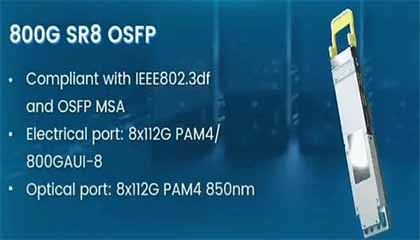
Common packaging types
QSFP-DD800: Similar to QSFP-DD, but optimizes power consumption and heat dissipation, suitable for data centers.
OSFP800: Used in high-end switches and core routers, providing better heat dissipation capabilities.
CFP2-DCO (Digital Coherent Optics): Suitable for coherent optical transmission, supporting long-distance network interconnection.
Key technologies
PAM4 signal modulation: A more efficient data transmission method to improve bandwidth utilization.
Coherent optical communication: 800G Fiber optic Transceivers generally use coherent technology in long-distance transmission to improve transmission stability.
Silicon photonics technology: Reduce power consumption and increase data transmission density.
Application scenarios
AI data center: 800G Fiber optic Transceivers can meet the high-speed interconnection between GPU clusters, support artificial intelligence computing and big data processing.
Cloud computing and hyperscale data centers: AWS, Google, Microsoft and other cloud vendors promote the development of 800G Fiber optic Transceivers to improve data transmission efficiency.
Telecom backbone network upgrade: 800G Fiber optic Transceivers are used in backbone networks and data center interconnections to meet the high-speed transmission needs of 5G and 6G in the future.
Development trend of 400G and 800G Fiber optic Transceivers
Higher energy efficiency ratio: With the advancement of process and packaging technology, the power consumption of Fiber optic Transceivers will be further reduced.
Wider application of coherent technology: In the future, coherent optical technology will be more widely adopted in the fields of DCI and backbone networks.
The rise of CPO (co-packaged optics) technology: By integrating optical components with switching chips, the internal transmission efficiency of data centers is improved.
Increasing demand for AI data centers: With the outbreak of AI computing, the demand for 800G and even 1.6T Fiber optic Transceivers will continue to grow.
As core components of the new generation of data centers and telecommunications networks, 400G and 800G Fiber optic Transceivers are driving the upgrade of global network infrastructure. 400G Fiber optic Transceivers are currently in large-scale commercial use, while 800G Fiber optic Transceivers are gradually being implemented and will become the mainstream in the market in the next few years. When choosing Fiber optic Transceivers, enterprises should choose the most suitable product solution based on their own network architecture, transmission distance, power consumption requirements and other factors.
Sopto Technology is a professional data center solution provider that can provide fiber optic transceivers with various packages from 1-800G. If you are interested, please feel free to contact us at any time, email [email protected]; My whatsapp: https://wa.me/+8618688759008/
Tags : 400G QSFP-DD, Fiber optic Transceivers,QSFP28,OSFP,QSFP-DD800
— END —




